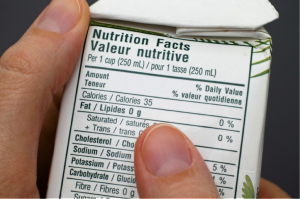 After years of research and consideration, the Food and Drug Administration (FDA) has announced a trans fat ban, effective 2018. Companies now have three years to either stop using the unhealthy artificial substance or petition the FDA for special permission—which won’t be easy to get. This is part of the industry’s move toward better heart health.
After years of research and consideration, the Food and Drug Administration (FDA) has announced a trans fat ban, effective 2018. Companies now have three years to either stop using the unhealthy artificial substance or petition the FDA for special permission—which won’t be easy to get. This is part of the industry’s move toward better heart health.
If you are planning to pursue a career in food safety, read on to learn more about trans fat—what makes it unhealthy and what the new FDA regulation means for the food industry.
FDA’s History of Food Quality Controversy
The FDA is the main North American food quality governing body, deciding which ingredients are safe to approve for sale and consumption in North America. Food safety training involves learning FDA regulations and how or why they came to be.
FDA regulations are often contentious—with food and pharmaceutical companies’ money and the public’s health at stake. When it comes to trans fats, activists and industry lobbyists have tugged the FDA in one direction or the other for over 15 years.
By January 2006, the FDA required that trans fat content be listed on nutritional labels. In 2013 it first announced the idea of banning them altogether, but it took two more years for the FDA to officially make its decision (one that some say puts three more years of negotiation time on the table). The opinions of stakeholders and food industry workers are the driving force behind the lengthy and heated regulation process.
What Food Technicians Know About Trans Fats
Food quality assurance experts are well-versed in reading between the lines of food labels. They learn to see “trans fat” and think “low-density lipoprotein,” which essentially means “bad cholesterol.” Foods most often containing trans fats include:
- Pre-baked cookies, and cakes
- Frozen cookie dough
- Chips and microwave popcorn
- Stick margarine
- Coffee creamer
- Tubbed frosting
Trans fats come from partially hydrogenated oil (PHO). This is oil that is thickened with heat and hydrogen, but stopped halfway through the process. Partially hydrogenated oil is less likely to spoil, so foods that are made with it will typically have a longer shelf life.
A Step Forward for Food Safety
According to Centers for Disease Control and Prevention, lipoprotein cholesterol in foods made with partially hydrogenated oil is responsible for up to 20,000 heart attacks and 7,000 coronary deaths each year. The FDA’s move to ban it from processed foods is expected to make drastically fewer fatalities.
Through food safety training, you can learn how to best guard your communities against harm. Studies show that diet and nutrition play a key role in preventing chronic health problems – and a ban on trans fats will clearly bolster a food professional’s defence.
Using Research Skills to Raise Quality Standards
The FDA commissioned extensive research into the effects of PHO throughout the great trans fat debate. This is because a healthier standard of nutrition on grocery shelves doesn’t happen without people in the food technology trade conducting research, writing reports, and producing evidential information to food governing bodies and the public.
As far as trans fats go, the research into its effects by food quality professionals is pushing the industry forward. Their findings have resulted in many companies already starting to remove trans fats from their processed foods, and cities like San Francisco and Philadelphia prohibiting them in their restaurants. The FDA estimates that many of the world’s major food suppliers may now even eliminate trans fats well ahead of the three-year compliance date.
Are you interested in learning more by enrolling in food quality assurance courses? Visit AAPS for more information or to speak with an advisor.



